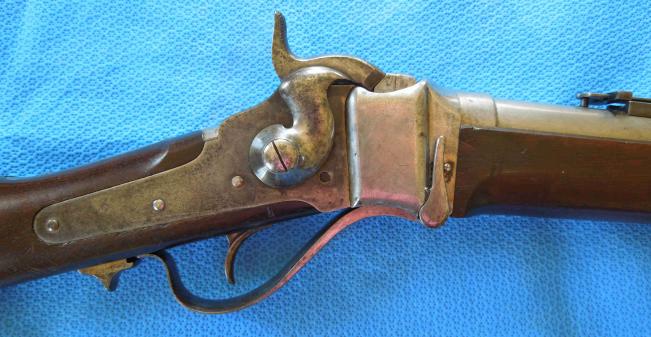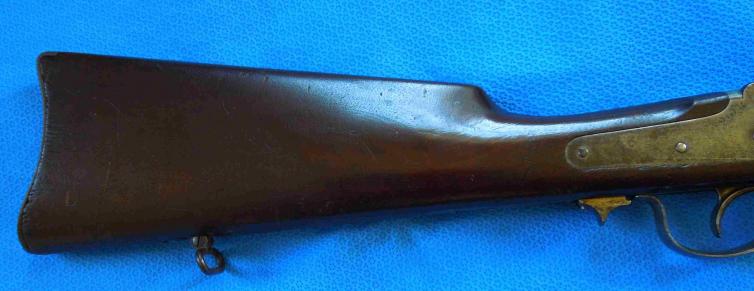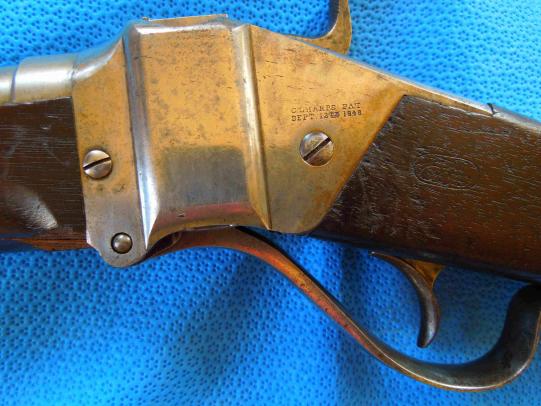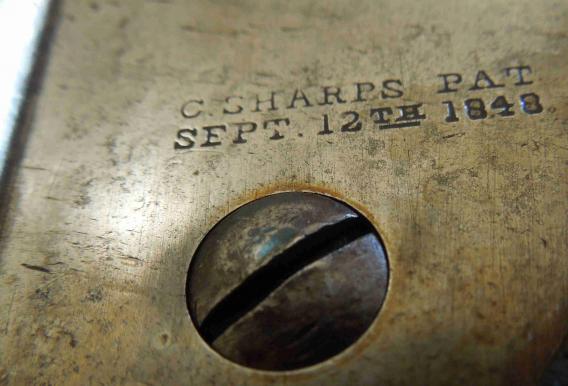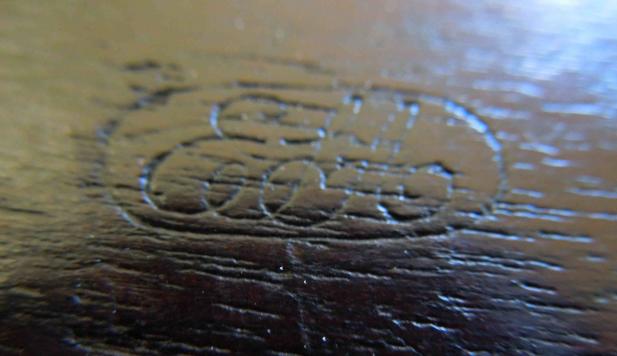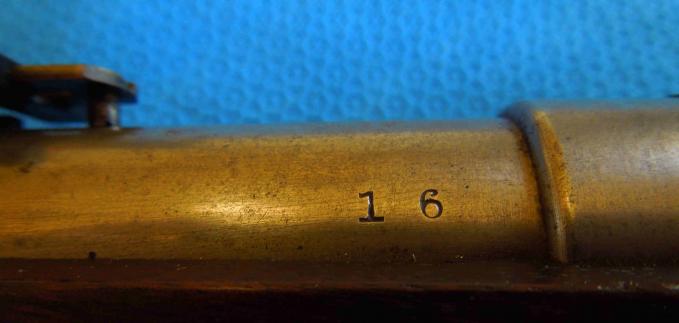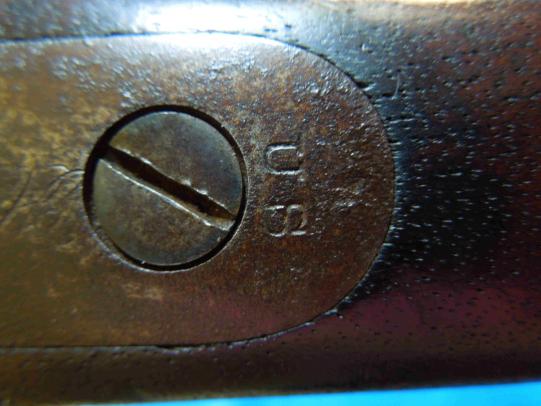1 of 300 Rare Sharps 1870 Trial Rifle
This is an extraordinary rifle!
In 1870 the US Ordnance Department purchased 300 of what would become known as the M1874 breechblock from Sharps. Springfield Armory used these new M1874 pattern blocks, newly modified levers, and parts of their own manufacture (or modification) to assemble 300 trial rifles. Like the guns that had been altered by Springfield, these new Type II rifles were chambered for the .50-70 Government cartridge. Like the earlier alteration Type 1 rifles, the guns had 35” Springfield made barrels that were secured to the forend with two-barrel bands. The barrels of both Type I and Type II rifles were serial numbered to the receivers at the left breech, above the stock line. In the case of the alteration rifles, if the receiver serial number included a “C”, indicating 100,000, it was omitted from the barrel number. Springfield modified existing, obsolete musket stocks to obtain the buttstocks and forends. The butt plates were also surplus Civil War era musket butt plates. The cleaning rod and rear sight were of the current production US M1870 pattern. The breechblocks, hammers, locks, levers, trigger plate and lever catch were colour case hardened, while the rear sight, screws, lever hinge pin, firing pin, extractor and barrel band springs were heat blued. The balance of the metal parts, including the barrel, barrel bands, butt plate, ramrod and sling swivels, were left in the white; better known as National Armory Bright.
These altered trials rifles used their original Sharps serial numbers, while the newly made Type II Rifles such as this one was serial numbered in their own unique sequence from 1 to 300, with the number appearing on the left side of the barrel breech and on the receiver tang. The receivers bore either the original Sharps percussion era patent markings, or the earliest of the cartridge era markings, but no others. The repurposed musket butt plates bore their original U.S. marks, and the left side of the buttstock bore the script inspection cartouche of Erskine S. Allin, the master armorer at the Springfield Armory. These incredibly rare experimental Sharps rifles were issued during 1871 and 1872 and most of them saw service with the army on the frontier. Many of the Type II rifles were issued to the 13thUS Infantry, which was deployed to deal with Indian issues in Wyoming, Utah and the Dakota Territories during the early 1870s. The regiment was eventually recalled to the East and was stationed in New Orleans in very late 1874. The overall field performance of the M1870 Sharps rifles (as well as the Remington rifles) was not as good as the M1870 Springfield Trapdoor. As a result of the field trials, a new pattern of Trapdoor, chambered for the newly developed .45-70 Government cartridge was adopted in 1873, and the brief experiment with the .50-70 cartridge and altered Sharps firearms came to an end. By 1875, the guns were considered obsolete and were already being sold as surplus by the US government.
Many of these guns ended up with Buffalo Hunters as they were less expensive than the series of Model 1874 “sporting” rifles.
This particular example is as good as I’ve ever seen. The butt plate bears the usual U.S. mark on the tang. The rifle is marked with a crisp script ESA in an oval cartouche on the left wrist of the buttstock; this is the mark of Springfield’s Master Armorer Erskine A. Allin. A small capital A is stamped to the right of the receiver under the trigger guard.
The receiver is stamped on the left side
C SHARPS’ PAT.
SEPT. 12TH1848.
The serial number of the rifle is stamped on the left-hand side of the barrel and is serial no 16 so one of the first made.
The receiver retains some case colour and all screw heads are excellent. The bore is clean and bright with deep rifling as it should be and the mechanism works flawlessly and also disassembles easily for cleaning as it should. The correct cleaning rod is present as are the ladder rear sights.
The walnut stock has handling marks and there is a chip missing from the rear of the receiver in front of the trigger guard. This is repairable and I can recommend a repairer but I tend not to “improve” guns and feel this is always best left to the discretion of the new owner.
Sharps are an iconic firearm associated with the Civil War, Indian Wars and Buffalo hunting. This is an incredibly rare type II trials rifle in the obsolete 50-70 calibre and can be owned without license but would make an excellent example for shooting subject to proofing and licensing.
A superb example of investment quality. Compare in quality to serial no 227 sold by a famous USA auction house for $13,000 + premium.
Code: 50632



